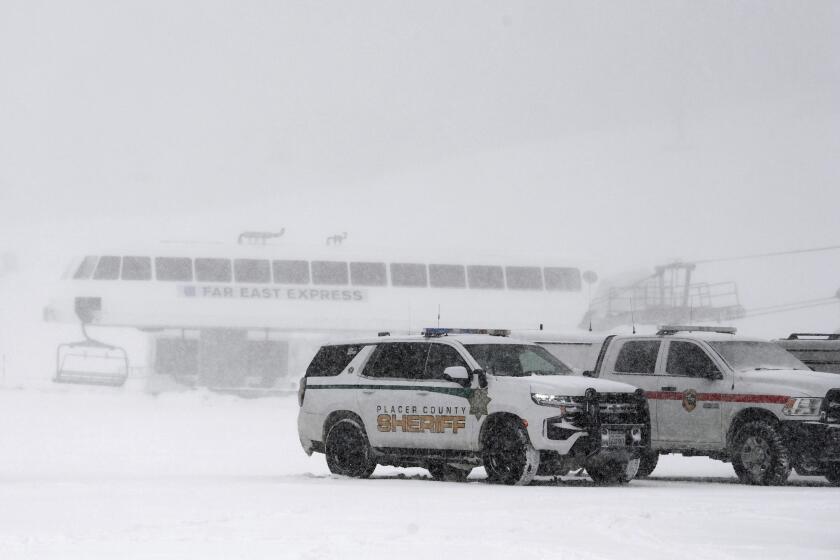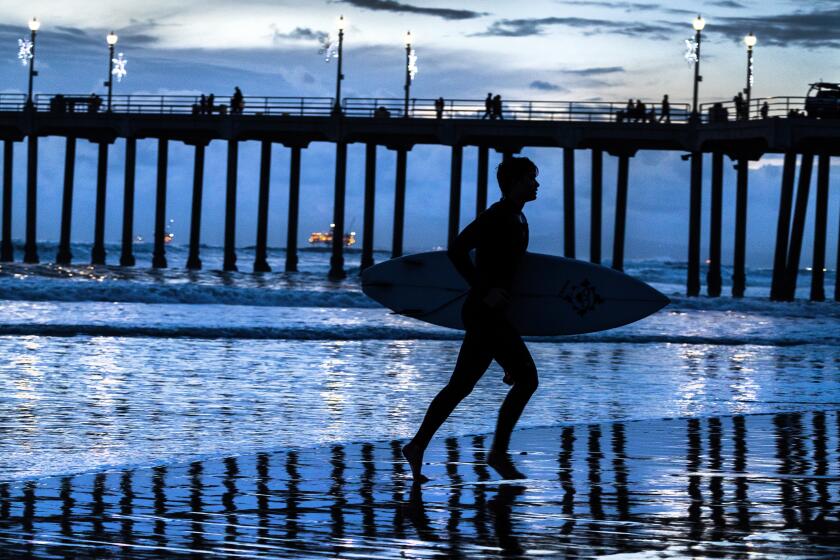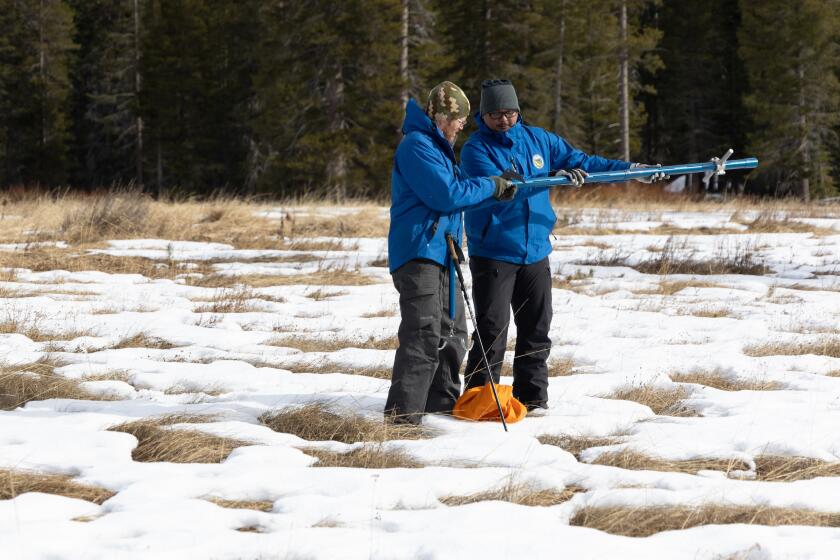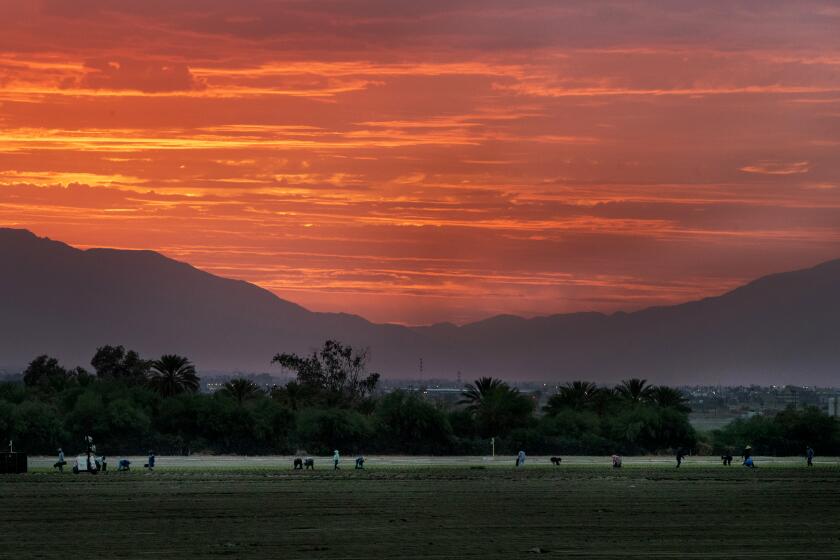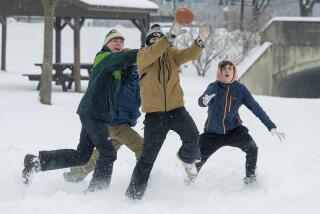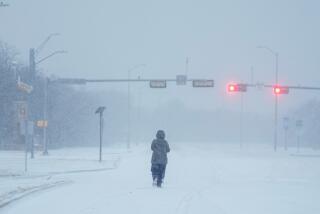Power line falls on car during Oregon ice storm, killing 3 and hurting a baby, authorities say
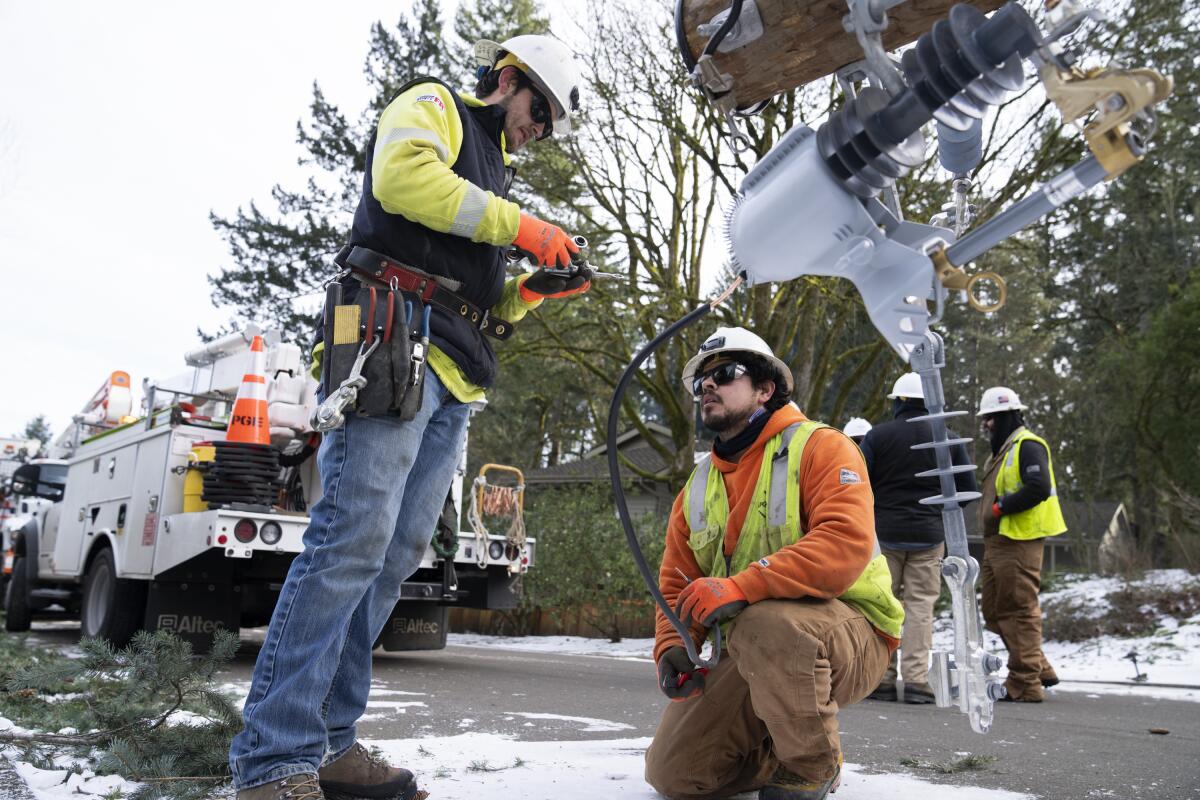
PORTLAND, Ore. — A power line fell on a car in Portland on Wednesday, killing three people and injuring a baby during an ice storm that turned roads and mountain highways treacherous in the Pacific Northwest.
A large branch fell on the power line, causing it to fall and crash into the car, said Rick Graves, spokesperson for the Fire Department in the Oregon city. It is believed the car’s passengers died when they exited the vehicle and became charged with electricity, he said. The three killed — two adults and one teenager — were found dead in the street upon firefighters’ arrival, and the baby was taken to a hospital, he said.
Around Portland, driving and even walking were difficult and dangerous as slick ice coated roads and sidewalks. Icicles dangled from roofs and cars, and ice encased branches, plants and leaves like thick glass.
A large swath of the region was under warnings Wednesday to prepare for as much as an inch of ice, promising to add to the damage wrought by a powerful winter storm that hit the region over the weekend.
The warning area was reduced later in the morning to parts of southwestern Washington state and northwestern Oregon, including Portland, a metro area of more than 2 million people, and further limited to the western edge of the Columbia River Gorge in the afternoon.
The three deaths in Portland on Wednesday came on top of at least seven deaths linked to fallen trees and suspected hypothermia during the previous storm’s cold snap and high winds.
Diane Flaherty, resident of a hilly and forested neighborhood in southwest Portland, said her home has been without power since Saturday. That day, she left her house when she saw the large tree in her front yard start swaying in the strong wind. To stay safe — and warm — she decided to stay with her brother-in-law.
One person was killed and another was injured when an avalanche struck the KT-22 area of the Palisades Tahoe ski resort Wednesday morning, authorities said.
“It was like a war zone,” she said, describing the sound of trees cracking as they toppled onto her neighbors’ cars and homes. “We were absolutely stunned.”
Schools and government buildings closed as authorities warned of icy roads and the chance of new power outages, as crews struggled to restore electricity to thousands who have been under blackout for days.
The storm hit the northwest corner of the U.S. as much of the rest of the country coped with bitter weather that in some places put electricity supplies at risk. More than 90,000 homes and businesses — mostly in Oregon — lost power across the country, according to PowerOutage.us.
Freezing temperatures spread as far south as north Florida on Wednesday morning, said Bob Oravec, a forecaster at the National Weather Service.
Southern California is expected to see to see two storms this week, according to the National Weather Service.
It was 5 degrees in Chicago and 6 degrees in Detroit, making both cities significantly colder than Alaska’s capital, Juneau, where it was 18 degrees. Some Midwesterners managed to find a bright side.
“It’s probably the most beautiful time in Chicago, ever,” Richard Wineberg said as he admired the snow-covered landscape.
New York and Philadelphia ended a drought of sorts with snow falling in both cities.
Toward a more sustainable California
Get Boiling Point, our newsletter exploring climate change, energy and the environment, and become part of the conversation — and the solution.
You may occasionally receive promotional content from the Los Angeles Times.
Five people were struck and killed by a tractor-trailer on Interstate 81 in northeastern Pennsylvania after they left their vehicles following a crash on slick pavement. Investigators were still determining the exact cause.
In western New York, the weather was blamed for three deaths in three days. Two people were apparently stricken while clearing snow, and a third was struck by a vehicle while brushing snow from his car, Erie County officials said Wednesday.
Heavy lake-effect snow was forecast in Buffalo, N.Y., with up to 4 inches an hour expected. Buffalo’s City Hall was closed Wednesday, and dozens of school districts declared snow days. Travel bans were issued for several suburban towns.
On the Crow Creek Sioux Reservation near Fort Thompson, S.D., about three dozen people stayed in a shelter and the tribe paid to put up about 40 families in a motel. The tribe also provided propane and wood for home heating, and plastic to cover drafty windows, for what tribal Chairman Peter Lengkeek called “substandard government homes.”
It’s expensive, but “you can’t put a price on life and suffering,” Lengkeek said.
In Tennessee, health officials confirmed at least six weather-related deaths. Memphis-Shelby County Schools, the state’s largest public school system with about 100,000 students, canceled Thursday classes.
The Tennessee Valley Authority, which provides electricity in seven states, reported a preliminary all-time record for peak power demand Wednesday morning as the region dropped to an average of 4 degrees.
In Oregon, officials closed 47 miles of Interstate 84, a major east-west highway that runs from Portland through the Columbia River Gorge, because of the threat of ice.
The Pacific Northwest is more known for rain and wasn’t set to experience such arctic temperatures, but the heavily forested region is especially prone to falling trees and power lines, particularly during ice storms.
From California to New England to Europe, many areas of the Northern Hemisphere are approaching a ‘snow-loss cliff’ due to global warming, researchers say.
Ice storms occur as freezing rain results in dangerous accumulations of ice. Freezing rain falls as water but freezes when it hits cold surfaces such as roads. It can weigh down trees and power lines, making them heavier and likelier to snap, especially in strong winds.
Warmer air was soon expected to provide some relief.
However, the icy morning forecast prompted Portland Public Schools, the largest district in the state, to cancel classes for a second day Wednesday, citing concerns over power, burst pipes and unsafe school walkways and parking lots.
County officials extended a weather state of emergency until noon Wednesday after serving a record number of people in its overnight emergency weather shelters. Officials issued an urgent call for volunteers, citing the high demand for shelter services in an area where thousands of people live outside.
“The real limitation for us right now is staffing,” said Dan Field, director of the joint county-city homelessness office. “We have to have enough people to keep the doors open of the emergency shelters.”
With a global average temperature of 58.96 degrees, the year was nearly one-third of a degree warmer than the previous hottest year on record, according to officials.
More to Read
Sign up for Essential California
The most important California stories and recommendations in your inbox every morning.
You may occasionally receive promotional content from the Los Angeles Times.
